
CRACS AND SCRATCHES
The phenomenon of friction of film materials against particular elements of devices during screening was impossible to avoid. During screening, film copies were many times drawn through numerous rolls and channels of the screening device, on which dust and splinters of emulsion settled. Contact of the dirty surface of the projector with the film stock could cause cracks or scratches to appear on emulsion and base.
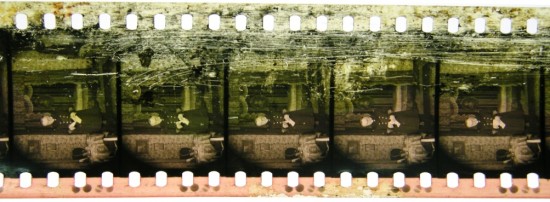 |
| Dług honorowy, phot. Michał Pieńkowski |
DAMAGE TO PERFORATION
Film perforation was particularly vulnerable to damages. Fragile and undurable materials made on the basis of nitrate cellulose could be easily torn during screening.
Damages to perforation did not have a direct effect on the quality of played image or sound under the condition that the damages were slight and occurred exclusively in the area of holes. However, if unrepaired, they deepened, which sometimes contributed to tearing and the loss of a part of image or soundtrack.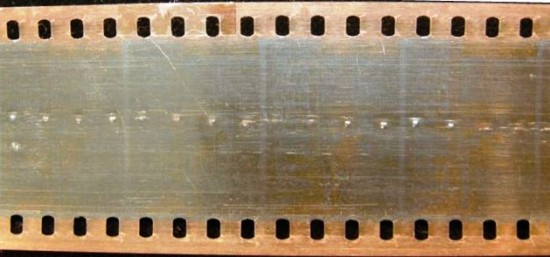
Mania, phot. Monika Supruniuk
Damages came into being in the first place at the beginning and the end of the act of film duplication. They could have the character of perforation holes, tearing the bridges between the holes, the so-called “chips” – sequential indentations caused by the projector’s troubled work. During screening, the damaged toothed bars to transport film cause partial tearing or breaking the perforation.
We also come across damages in the form of “incising” cracks, characterised by the breaking of perforation on the point of folding the film along the crack.
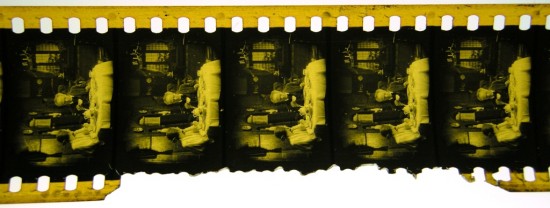 Dług honorowy, phot. Michał Pieńkowski
Dług honorowy, phot. Michał Pieńkowski
DEFORMATIONS
During drying, the durability of films materials was subject to a significant decrease. It was the climatic conditions of storage that had the largest impact on deformations of films.
Because of the arrangement of the carrying rolls the film was subject to multiple bending when going through screening or copying devices. This phenomenon was the reason for permanent or temporary deformations. The resilience of the base was the factor that determined whether a film copy returned to its former shape or not.
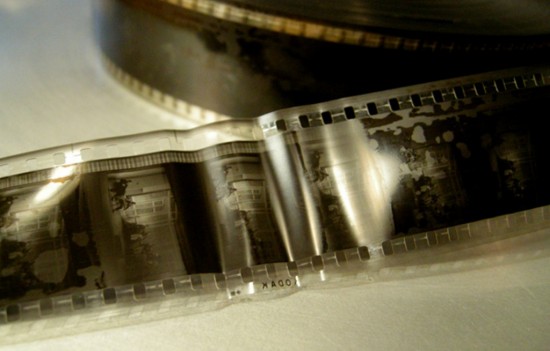 |
| miejscowe odkształcenia taśmy, phot. Monika Supruniuk |
DAMAGE TO SPLICES
Sticking together the fragments of film was the basic conservation activity carried out on the point of using the film. In everyday practice, such repairs were the duty of the cinema operator. Due to their shape, splices were particularly vulnerable to damages.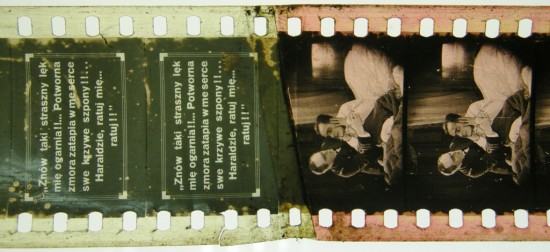
Dług honorowy, phot. Michał Pieńkowski
FILM SURFACE SOILING
The quality of screening depended on the cleanness of film materials. Film soiling resulted mainly from dust, clothing fibres, grease, fingerprints and glue. 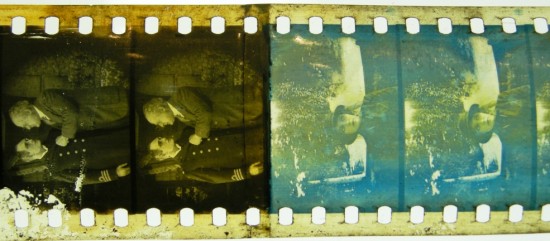
Dług honorowy, phot. Michał Pieńkowski
When in use, film materials were repeatedly cleaned by means of soft cloths soaked in various solutions. The most dangerous was wiping with dry cloth, which caused electrostatic charging of the film surface, attracting particles of dust. 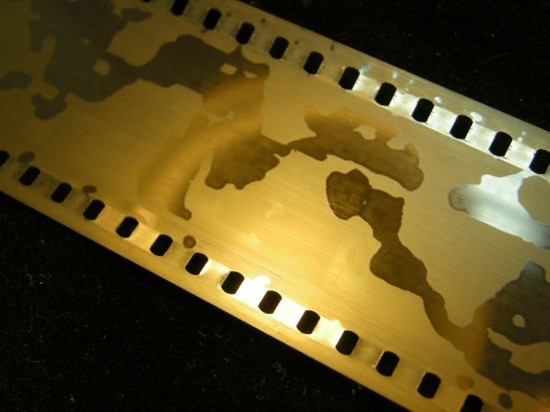
oil from the projector, phot. Monika Supruniuk















